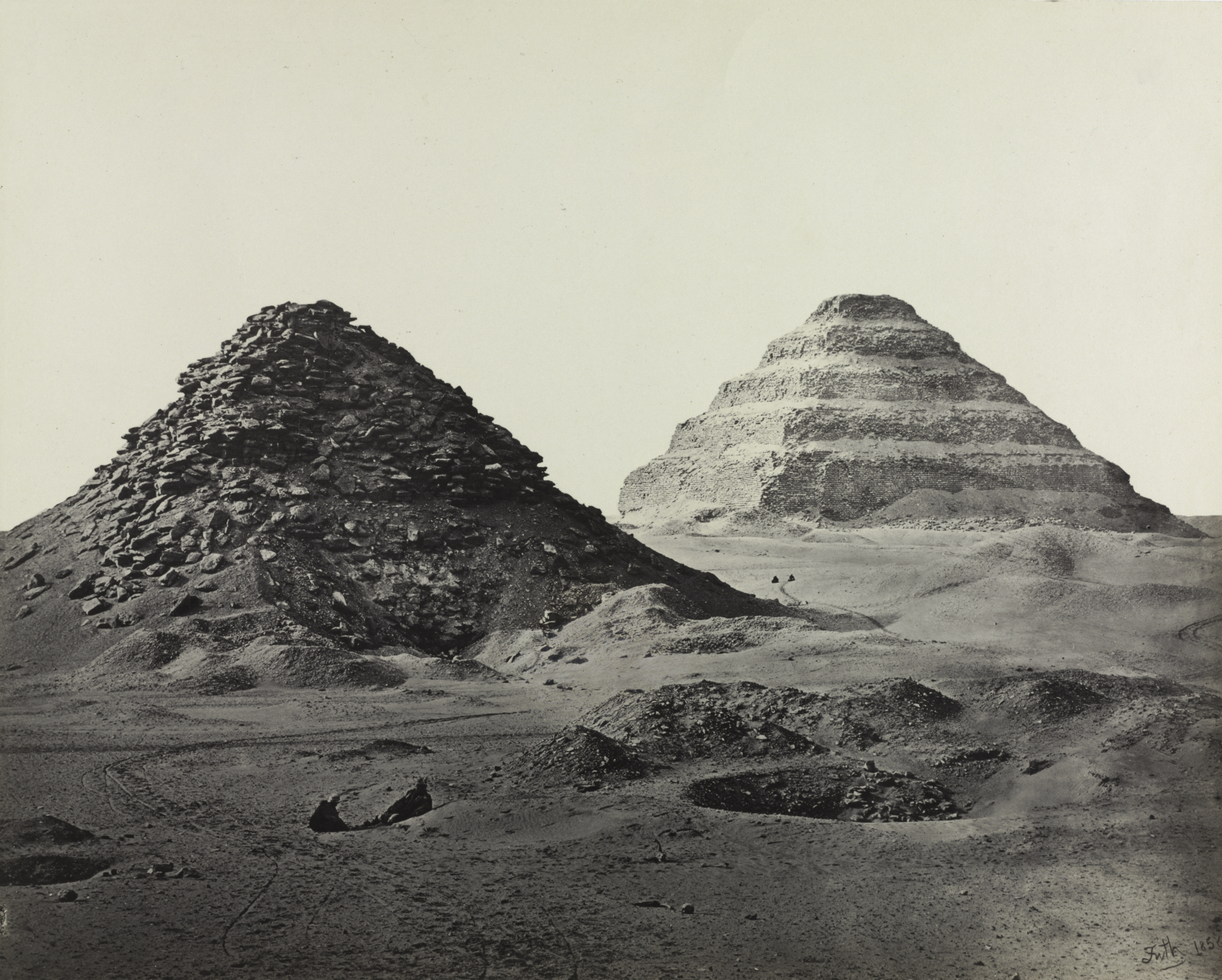The Cleveland Museum of Art
Collection Online as of April 25, 2024

The Pyramids of Saqqara, from the Northeast
1858
(British, 1822–1898)
publisher
Image: 38.2 x 47.7 cm (15 1/16 x 18 3/4 in.); Matted: 61 x 76.2 cm (24 x 30 in.)
Location: not on view
Description
Frith was the first photographer in Egypt to successfully use the wet collodion process, introduced in 1851. Its glass plate negatives yielded sharper, more detailed images than paper ones. He even created mammoth plate prints, as this size is called, which required equally large glass plate negatives. Pursuing the process’s exacting chemistry in Egypt’s scorching sunlight was trying. Frith sometimes sought refuge in tombs for the cool air and darkness to process his plates. “Pushing myself backwards upon my hands and knees, into a damp slimy rock-tomb . . . I prepared my pictures by candlelight in one of the interior chambers. . . . The floor was covered . . . with an impalpable ill flavored dust, which rose in clouds as we moved; from the roof were suspended groups of fetid bats.”- Charles Isaacs, New York, NYMarch 4, 1996The Cleveland Museum of Art, Cleveland, OH
- Cleveland Museum of Art, Tom E Hinson. Catalogue of Photography. Cleveland, OH: Cleveland Museum of Art, 1996. Reproduced: P. 178
- Pyramids & Sphinxes: Views of Egypt. The Cleveland Museum of Art, Cleveland, OH (organizer) (February 6-May 24, 2016).
- {{cite web|title=The Pyramids of Saqqara, from the Northeast|url=false|author=Francis Frith, William Mackenzie|year=1858|access-date=25 April 2024|publisher=Cleveland Museum of Art}}
Source URL:
https://www.clevelandart.org/art/1996.19